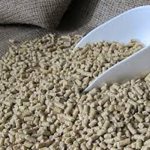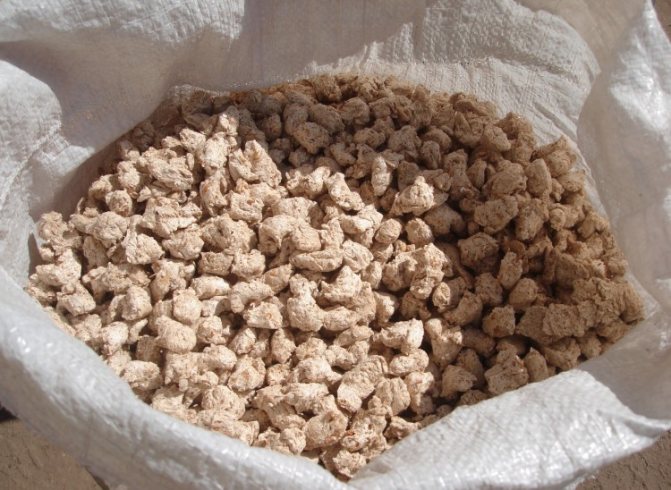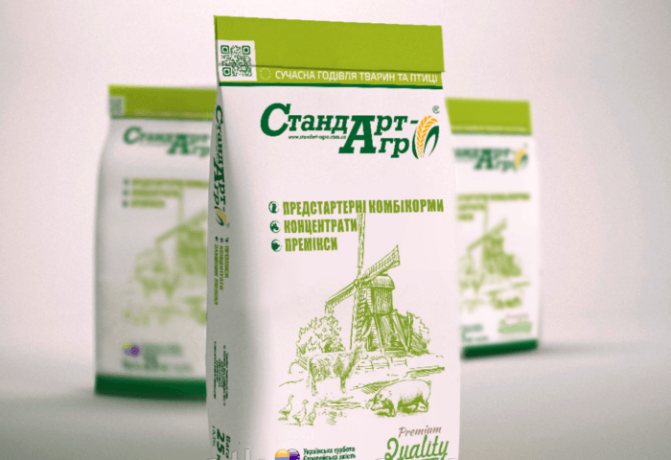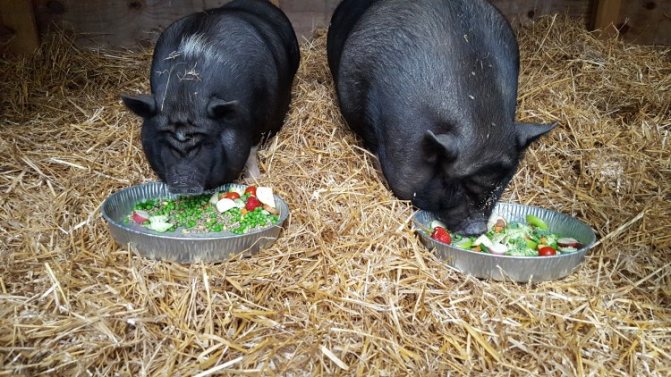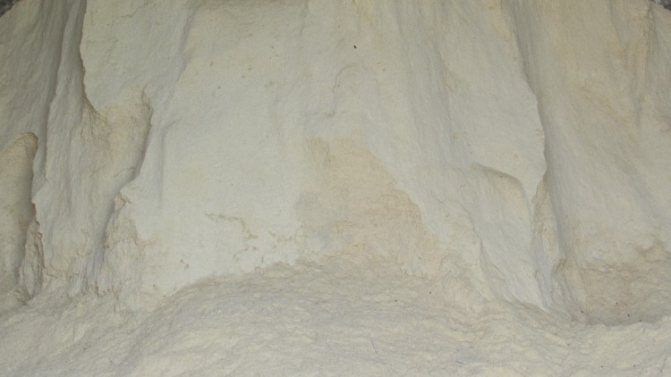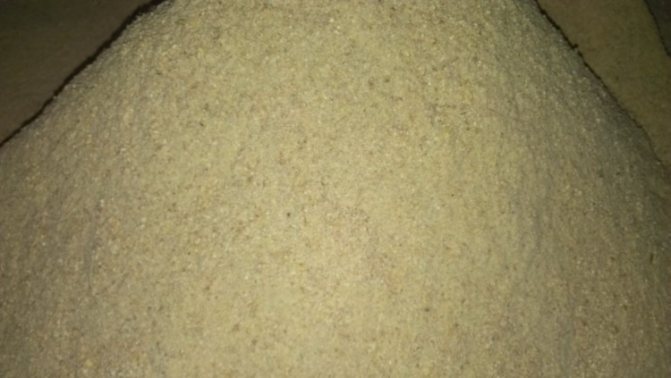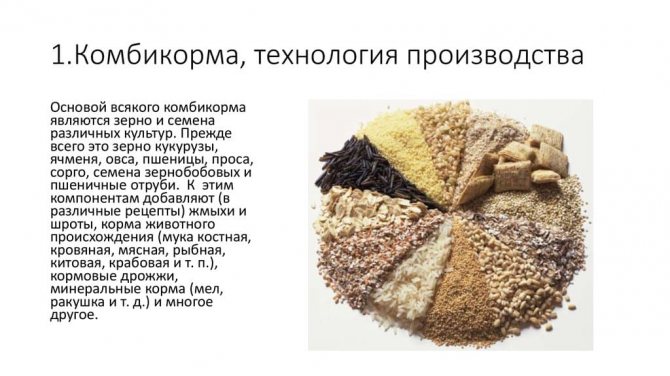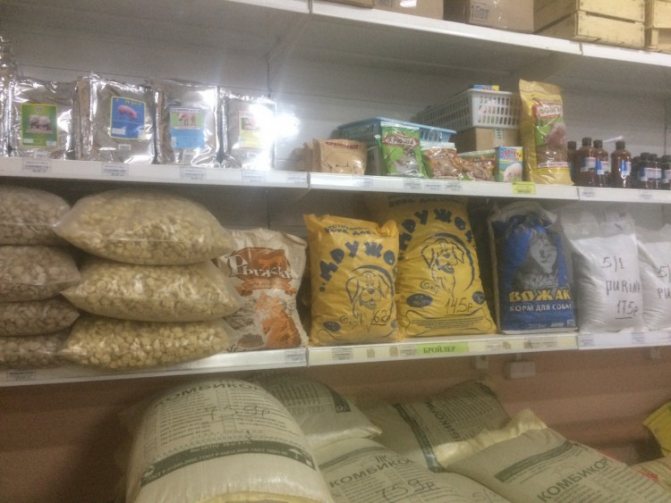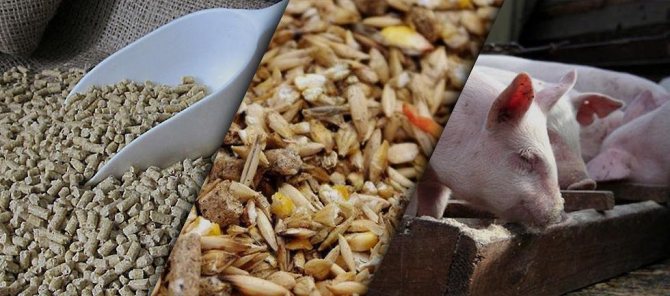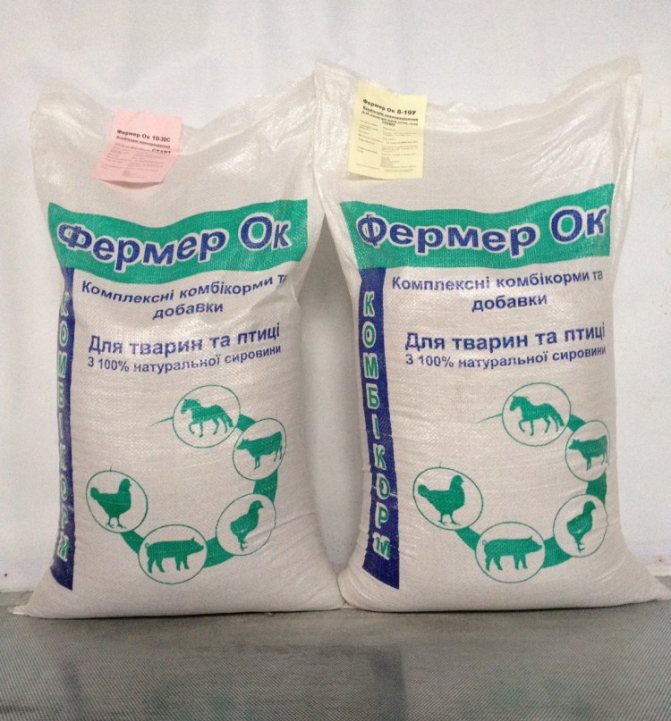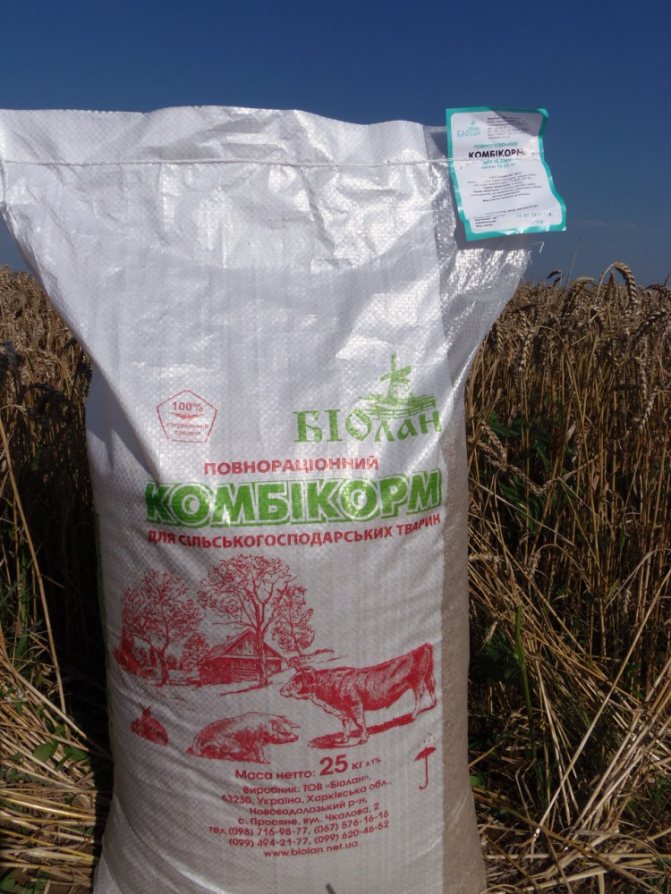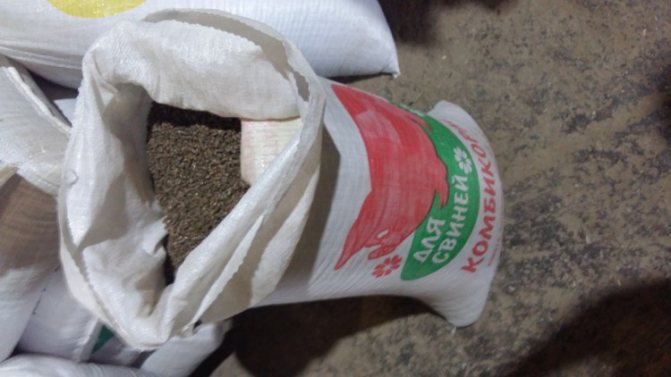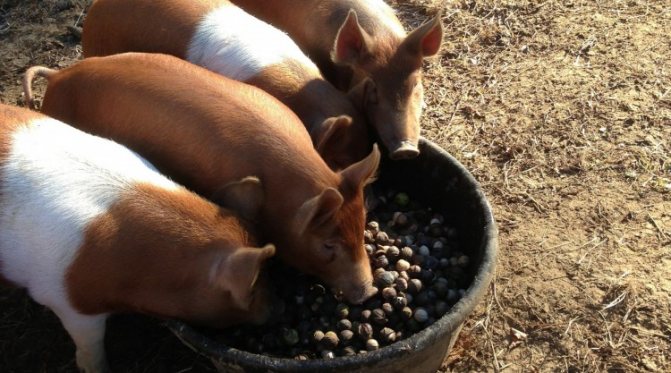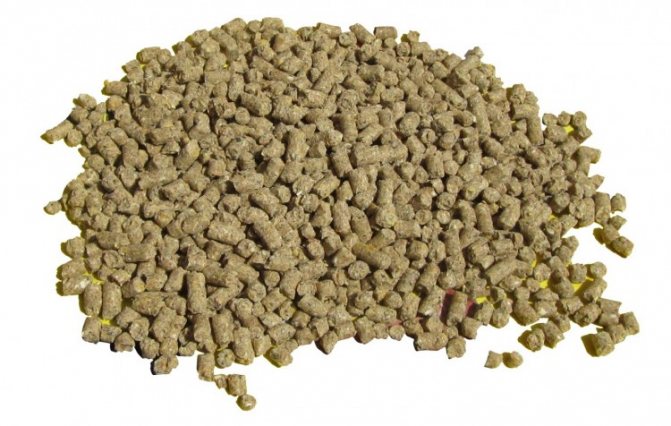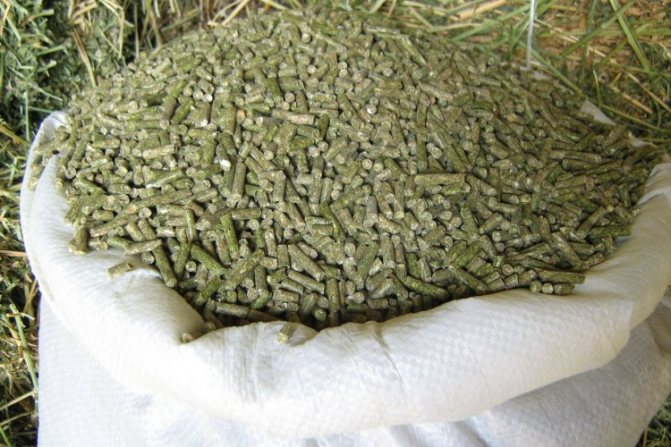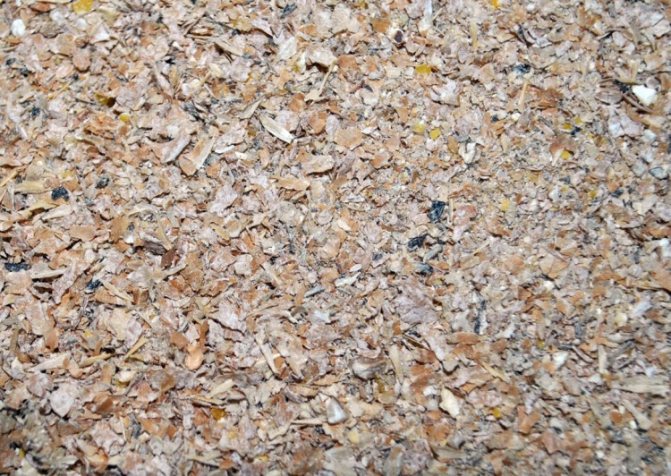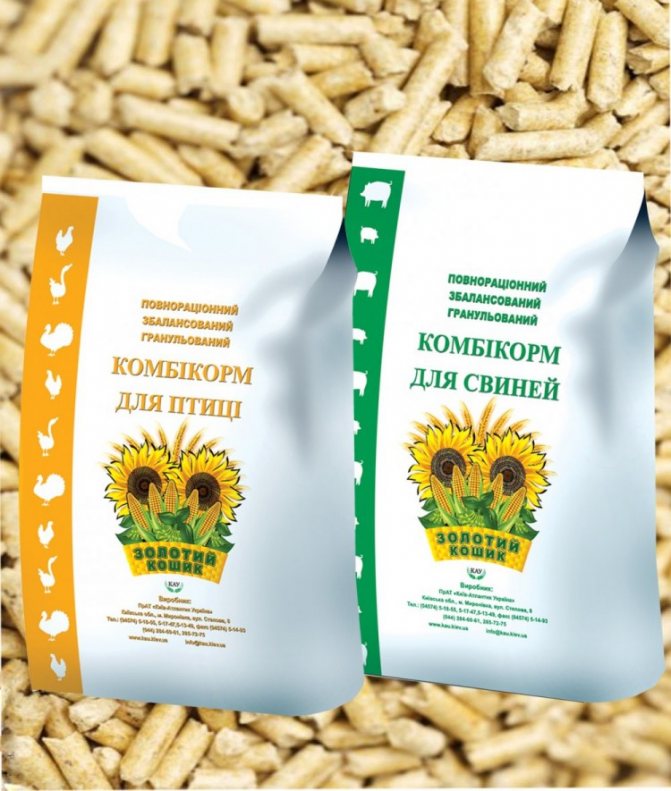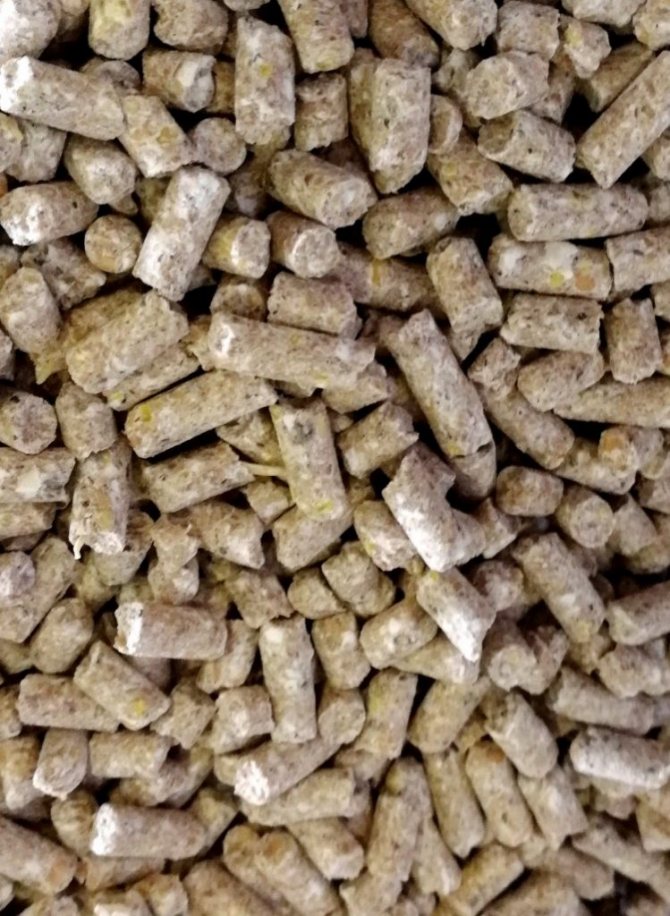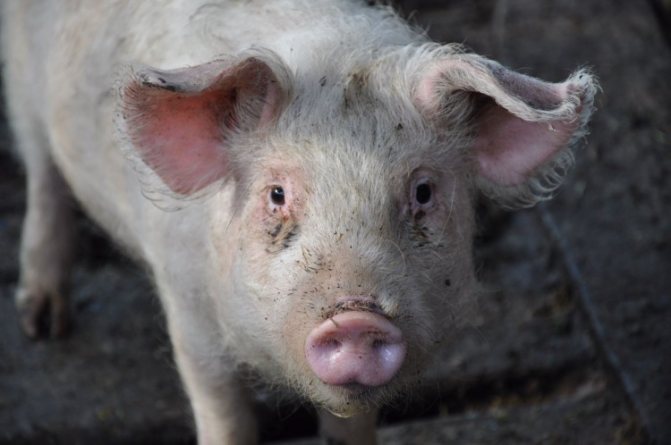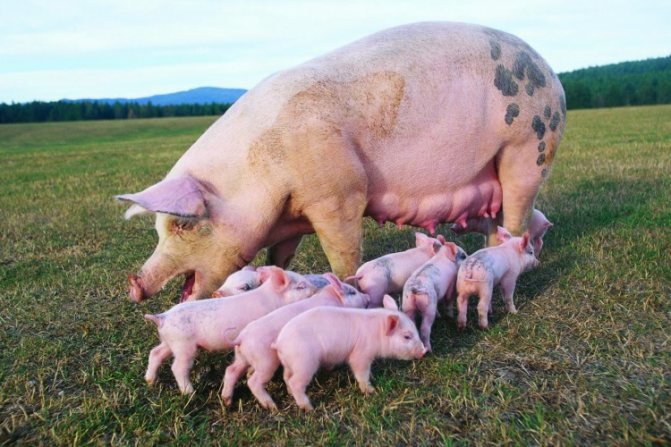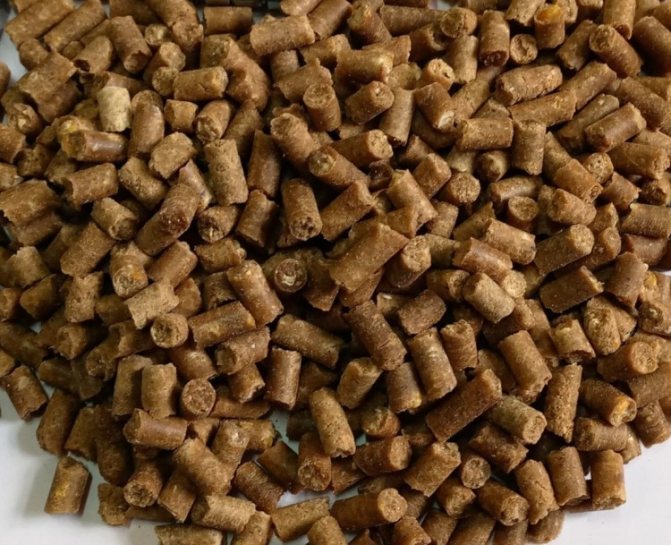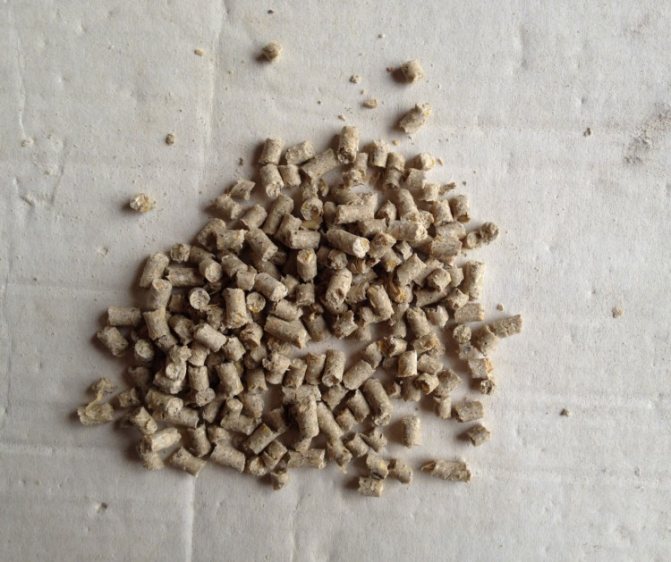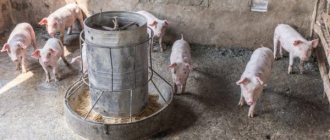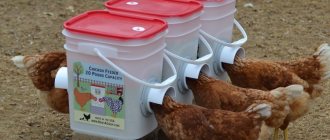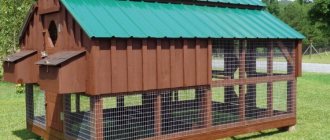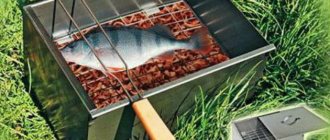Compound feed is a product that is actively used for feeding animals that are bred at home or on a farm. Today there are a huge number of factories that specialize in the production of pig feed. They all differ in composition and complexity. When choosing the product in question, it is necessary to take into account which components were used in the preparation of the feed. Indeed, for each age of the animal there is a specific pig feed.
Classification
Pig feeds are divided by type, composition and purpose.
Most often they include in the composition of the substance:
- proteinaceous - meal and flour from legumes;
- from waste - meat residues;
- energy - grain combinations;
- rough - bran, hay, vegetables.
By type of compound feed can be:
- granular;
- dry;
- liquid;
- loose;
- wet.
In practice, pelleted feed is more often used - they are convenient in storage and transportation, they generate less dust and are more easily absorbed by the pig's body.
The purpose of the food determines who can eat it. Division by purpose:
- compound feed for suckling pigs - pre-starter;
- for animals up to 1.5 months - starter;
- for young animals 1.5-8 months;
- for fattening individuals - growth;
- for breeding boars - finishing;
- for lactating sows.
General information
Compound feed is a balanced mixture of nutrients, as well as saturated with various vitamin complexes and minerals. Excellent health, high immunity and growth are guaranteed with the correct, responsible choice of the combination feed.
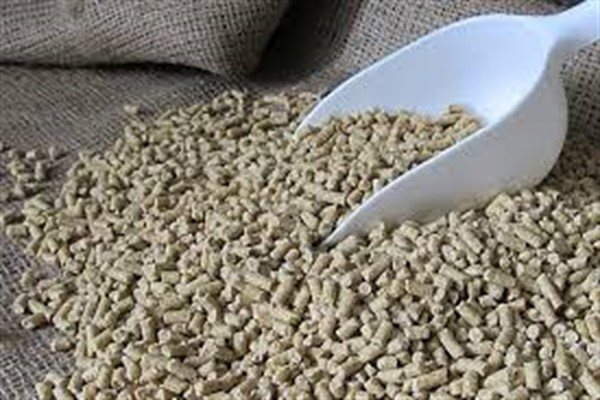
On the market there are most of the combined feed for all kinds of farm animals. They produce a variety of mixed feed, starting from the age category and variety for pigs and piglets, Vietnamese pigs, pigs for meat, bacon, and so on.
Compound feed is divided based on the age categories of pigs:
- for piglets up to 1.5 months;
- pigs from 1.5 months;
- pigs up to 8 months old;
- pigs from 8 months old for slaughter;
- boars for further productivity;
- sows.
Also, compound feed can be divided into types, depending on the composition of the mixture.
Types of compound feed:
- coarse, the basis of which is hay, vegetable mixtures and bran;
- for building muscle mass, the basis of which is proteins from flour, sunflower cake and legumes;
- high content of cereals - high-energy;
- waste represented by meat, dairy and fish offal.
The consistency of the feed is:
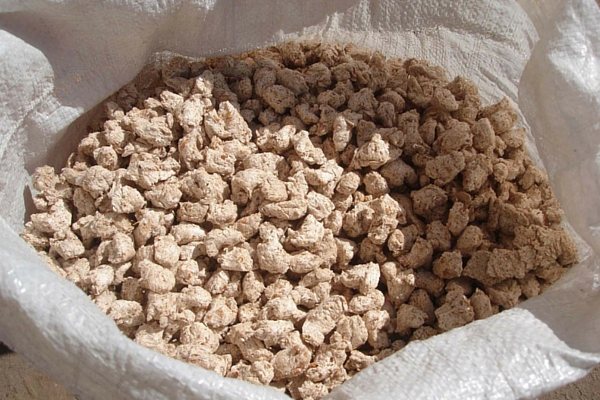

Dry mixtures in granules can be used exclusively in pigsties with a normal ventilation system. It is also necessary to equip the pigsties with appropriate hopper type feeders.
The composition of the granulated compound feed is sufficiently concentrated, and it must be fed to the pig's diet in a certain dosage, in order to avoid possible overeating. Wet compound feeds have a homogeneous structure. Water for drinking and food of the animal's diet should be in equal amounts.
The best manufacturers of compound feed
The composition of feed for pigs, boars and piglets is determined by GOST standards. According to the standard, the feed should contain 6-12 required elements. Some of them can be replaced by analogs that are cheaper to manufacture.Some components can be eliminated without replacement - then the feed is labeled as a "temporary composition" product.
Compound feed recipes for boars-producers according to GOST.
Recipe number 1 - PK-57-3-89:
- 1% - premix;
- 9% - sunflower meal;
- 18% - alfalfa flour;
- 16% - meat and bone meal;
- 2% - feed chalk;
- 27% - crushed barley;
- 26% - oats;
- 1% table salt.
Recipe No. 2 - analogue of feed for producers (PK-57-4-89):
- 30% - barley;
- 1% - premix;
- 1% - feed chalk;
- 1% salt;
- 39% - oats;
- 6% yeast;
- 6% - sunflower meal.
In the analogue, meat and bone meal is replaced by yeast, the amount of cereals is also increased and alfalfa flour is excluded. In terms of nutritional value, the composition of feed No. 2 is not inferior to the first recipe. Approximate indicators:
- nutritional value - 11 MJ / kg;
- protein - 170 g;
- fiber - 78 g;
- calcium - 10 g;
- phosphorus - 8 g;
- fat - 55 g.
Compound feed recipes for piglets are distinguished by fewer components - from 6 to 9, but more energy value. Example:
- 3% - pre-starter premix;
- 7 %% - feed fat;
- 15% yeast;
- 5% - chalk;
- 1% salt;
- 69% is barley.
Compound feed for piglets is supplied in the form of finely ground friable feed.
The standard defines not only the nutritional value, the list of ingredients in the composition of the feed, but also other parameters that a good feed must meet:
- the presence of mineral additives - phosphorus, calcium, sodium salts, potassium;
- type of grinding - fine, medium or coarse;
- the diameter of the granules is on average 8-10 mm;
- degree of humidity.
Combined feed, as its name implies, is a combination of nutrients, vitamins, macro- and microelements necessary for animals, which ultimately allows you to create a balanced diet for pigs of different ages and breeds. Complete feed, containing ingredients important for the growth and development of the pig population, can completely replace all other types of feed.
Benefits
Feeding pigs with compound feed has the following advantages:
- significant savings in working time spent on the preparation of conventional feed;
- the balance of the components, which makes it possible to compose a complete diet of the animal;
- convenience of storage at room temperature;
- a large number of various products on the market.
disadvantages
The disadvantages of feeding with compound feed are:
- rather high cost of quality products;
- the dangers of feeding pigs with cheaper feed mixtures that may contain components that are difficult for animals to assimilate;
- sometimes it is impossible to find on sale the high-quality type of compound feed that is needed right now, even with a wide selection of them on the market.
With a wide variety of percentages of ingredients and their different proportions in various types of feed, their basic composition is basically the same.
For adults
Compound feed for feeding adult animals most often consists of:
- barley;
- oats;
- sunflower meal;
- meat and bone meal;
- alfalfa flour;
- feed chalk;
- table salt;
- premixes.
For young animals
Compound feed for piglets differs not only in composition, but also in small fraction. They are given feed mixture only in the form of fine grinding or in granules, turned into a thick porridge with a temperature of at least 35 ° C.
The combined feed for piglets consists mainly of:
- barley;
- feed yeast;
- feed fat;
- table salt;
- feed chalk;
- premixes.
In the table of ratings of the leading manufacturers of compound feed in Russia, the following companies are among the leaders:
- Cherkizovo;
- Miratorg;
- Prioskolye;
- Cargill;
- BEZRK-Belgrankorm;
- GAP "Resource";
- "White bird";
- Rusagro;
- Charoen Pokpand Foods;
- Agro-Belogorie.
Among compound feeds, when answering the question, which one is better among them, they stand out in popularity:
- Purina ("Purina");
- KK-55;
- PK-55-Ray;
- SK-8.
Purina consists of:
- wheat;
- oats;
- corn;
- soybean meal and cake;
- vegetable oil from Kuban oilseeds;
- vitamin and mineral complex, which includes all the main vitamins and macro- and microelements.
KK-55 is a concentrate feed that satisfies the needs of pigs in the energy component, vitamins and minerals and consists of:
- barley;
- triticale;
- wheat bran;
- grain mixtures;
- rye;
- sunflower meal;
- lupine;
- yeast;
- mineral and vitamin group;
- feed chalk;
- table salt;
- phosphate;
- premix.
Compound feed PK-55-Luch is intended for rapid growth and for fattening pigs from 40 to 120 kg, shortening the fattening period and contributing to the maximum assimilation of feed.
The basic composition of the compound feed is presented:
- barley;
- wheat bran;
- wheat;
- sunflower meal;
- meat flour;
- molasses;
- limestone flour;
- vegetable oil;
- table salt;
- amino acids;
- premix P-54;
- enzymes;
- phytase;
- antioxidants.
SK-8 is a complete feed in granules for fattening pigs at the age of 4 to 8 months.
The composition of the product is presented as:
- oats;
- wheat;
- barley;
- corn;
- wheat bran;
- sunflower meal;
- feed chalk;
- table salt;
- premix P-54.
The fairly high price of high-quality combined feed mixtures forces many livestock breeders to prepare the product on their own. Since each owner knows his pets well, that is, how much each of them eats, what is the average daily feed consumption, how much is needed for one pig and how much the individual eats before slaughter, it is easier for him to make a calculation and draw up an optimal feed recipe for each animal.
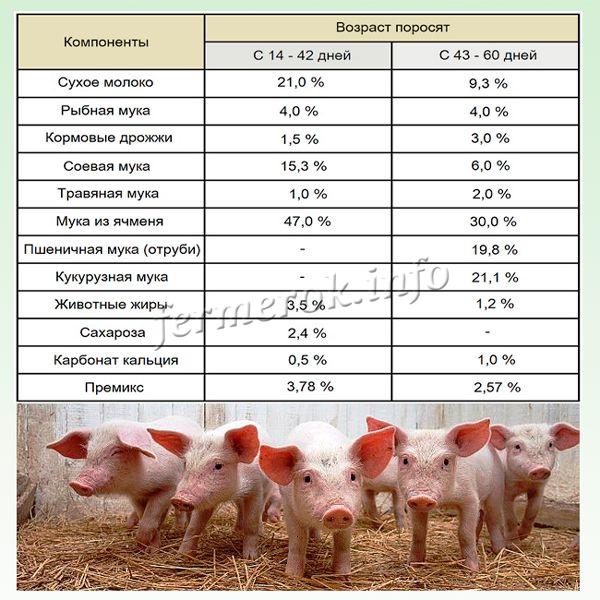

On average, the ingredients of a typical compound feed as a percentage are:
- barley - 40;
- corn - 30;
- wheat or wheat bran - 9.5;
- meat and bone and fish meal - 6;
- grass flour - 5;
- peas - 5;
- soybean or sunflower meal - 3;
- feed chalk - 1;
- table salt - 0.5.
In addition, for each kilogram of product, add:
- zinc sulfate - 0.1 g;
- iron sulfate - 0.1 g;
- manganese sulfate - 0.015 g;
- copper carbonate - 0.015 g;
- cobalt chloride - 0.005 g;
- potassium iodide - 0.002 g.
The necessary premixes are also added according to the instructions attached to them.
To decide what a particular diet consists of and what its components are made of, its purpose should be determined.
Young piglets
It is recommended to feed piglets with small-fraction loose compound feed or their granular analogue. It is diluted with warm water and brought to a mushy state, which contributes to better assimilation of food and accelerated growth of animals.
Consider how much feed you need to raise piglets. The diet of individuals depends on their age. Animals up to two months of age need up to 1 kg of compound feed daily. Then, up to six months of age, piglets should be given 1.5 kg of feed mixtures every day.
Adults
Feeding adult animals depends on what they are raised for. The diet of pigs raised for meat differs from that of greasy animals. Animals at the age of 8 months, which are raised for meat, are given an average of 3.4 kg of food per day. Pigs of the same age, but fattened to obtain fat, are given 3 kg per day.
Special diets are for pregnant females and pigs feeding their cubs. Consider how much a pregnant sow eats per day and how much is needed for sows during lactation. The diet for pregnant females is increased to 3.7 kg, and for pigs feeding piglets - up to 6.4 kg.
Combined feeds, which significantly accelerate the growth of pigs and improve the consumer qualities of the meat and lard obtained, are quite affordable for self-production at home.
Feed mixtures are produced by manufacturers in several types:
- full-fledged (complete) PPK feed;
- concentrated combined feed.
Mixes of complete composition, enriched with vitamin complexes and microelements, contributing to the rapid growth and development of pigs. This feed does not require additional introduction of various additives.
Concentrated is essentially a staple food supplement for fast growth. It is added when there is insufficient enrichment with vitamins and nutrients from the main types of food.
Quality standards in production are strictly regulated by GOST. The composition of the mixture must have at least 5 components. The best is the feed, the composition of which has the main necessary components - 6-8 units, and everything else is the addition of the necessary trace elements and vitamin complexes.
Sometimes, there is a need to replace products with similar ones. This is provided for by the regulations of the state standard. Such a replacement must be indicated on the food packaging in the form of a special designation, and the exact dosage must also be indicated.
With the help of the same state standard (GOST), they regulate the production of complete combined feed and concentrated feed.
The state standard defines the necessary characteristics that various types of combined mixtures must possess:
- nutritional value of the total feed with the addition of different types of components;
- the structure of minerals in relation to standards;
- feed grinding - coarse, medium, fine, as well as granularity.
Pellets for suckling pigs should be no larger than 7.5 mm, and no larger than 10 mm for grown animals.
Combined feeds and mixtures for feeding
A carefully selected and used feed base for domestic animals is the basis for their normal growth and development, along with the creation of optimal conditions for keeping pigs, it is important to carefully consider the choice of compound feed.
The degree of its benefit for animals and the level of assimilation depends on the composition and consistency, intended purpose and content of additional ingredients of the combined feed, good nutrition will ensure the normal functioning of the digestive system and stable weight gain for animals of different breeds.


Feeding pigs with compound feed
Pig feed can be purchased at the factory or prepared by hand. The first will definitely better meet quality standards and have appropriate labeling, while the second will be cheaper, while the quality will depend on the raw materials. Compound feed recipes vary, and home cooking is only profitable for small pig farms where there is no increased operator workload.
The feed manufacturing process consists of several stages:
- Preparation of initial components and equipment.
- Preparation of the work table and utensils.
- Calculation of the number of components according to tables of correspondence to the weight of the pig.
- Mixing, grinding, crushing and granulating.
For piglets
Compound feed recipes for piglets differ from those for adults. Compound feed for suckers is a wet mash of thoroughly ground grains with the addition of water or milk mixture, heated to 30 °.
Simplest food ingredient available:
- 1 kg - feedstock - cereals (oats, barley, millet, corn);
- 10 g - feed fat;
- 5 g - salt;
- 15 g - chalk;
- potatoes;
- bread;
- water or milk.
For cooking, grains and peas are ground and mixed with the rest of the ingredients. Grate potatoes. Add liquid and mix. Warm to room temperature.Food is not subjected to heat treatment, otherwise it loses its nutritional properties.
For fattening
The recipe for compound feed for fattening pigs is more nutritious, so that individuals gain fat mass faster. Examples of recipes are shown below.
Recipe number 1:
- 25% - wheat;
- 17% - barley;
- 10% - oats;
- 35% - bran;
- 10% flour;
- 1% - chalk, lime;
- 0.4% salt;
- 0.4% - premix for fattening.
Recipe number 2 special fattening:
- 23% - wheat;
- 4% - sunflower meal;
- 10% oats;
- 60% - bran;
- 1.8% - chalk;
- 0.4% salt;
- 0.25% - fattening premix.
As can be seen from the recipe, the fattening food is distinguished by a high content of bran in the composition. The nutritional value is 10-15 MJ / kg. In addition to standard components, for greater productivity, mineral components and vitamins, as well as microorganisms, probiotics that promote rapid growth are added to feed.
For pigs
For pigs and sows, cereals are the main food component. Do-it-yourself pig feed can be prepared by boiling, steaming or yeasting.
Yeast is carried out as follows:
- 100 g of yeast is placed in an enamel bowl - 10 kg of ready-made feed is obtained from them.
- Add 15 liters of warm water.
- The rest of the feed components are poured into the mixture and left for 8 hours.
- The ready-to-eat food is served after a week.
Periodically, grain meal or flour is malted. For this:
- The crushed mixture is poured into a basin and poured with boiling water in the proportion: 2 parts of water to 1 part of the mixture.
- Mix the composition and cover with burlap.
- Leave to infuse for 5 hours.
Scalded feed promotes the early formation of a greasy layer in pig meat.
In cases where you need to save on food, while not losing weight, use a juicy food based on vegetables - silage. Take the ingredients:
- 45% - potatoes;
- 60% - sugar beets;
- 7% - peas;
- 30% - corn;
- 10% - carrots.
For cooking:
- Vegetables are crushed to a mushy state and placed in a barrel.
- Potatoes are steamed with boiling water.
- Add salt.
- Everything is thoroughly mixed and tamped.
- Cover and leave to infuse.
Silage-based forage deteriorates quickly, so it is prepared and served after calculating the dosage. For cooking, a silo pit can be used instead of a barrel.
All feed components are easy to obtain and purchase from producers or prepare yourself. Grains and vegetables can be grown at home, and mineral supplements and trace elements can be purchased at veterinary stores and pet supplies.
Adults
- Dry is usually used in large industries. It is poured into special containers, containers, where it is dry and there is a good ventilation system. Such mixtures are usually fed to feeders (for example, bunkers) automatically.
- Granulated compound feed is given to animals in limited portions so that they do not overeat. Most often purchased by breeders from private small enterprises, villages, farms.
- The liquid type of compound feed is not always delivered to stores in large volumes, unless on order. The moisture content of such a mixture is not less than 75%.
- Wet food has a uniform consistency. It is made by mixing dry mixtures and water in a ratio of 1: 1.5.
In addition, compound feeds are divided by age category: pre-starter, starting, growth, finishing.
Starter can be given to pigs from 5 to 48 days of age. The starting one is intended for individuals of 10-35 kg, the growth one is suitable for feeding animals from 30 to 60 kg, but the finishing one is given to pigs and boars that have reached and exceeded 65 kg. Although these figures may differ slightly depending on the manufacturer and the profile of the compound feed (for pigs, boars, females during lactation, etc.).
When preparing food for young animals or fattening pigs, certain rules must be followed.
- The feed (especially the grain in it) must be finely ground - fine grinding.
- Only mushy and moist, free-flowing compound feed consistencies are suitable for young growth.
- Before feeding the mixture to the animals, it is warmed up to 30 degrees Celsius.
So, what is the simplest recipe for compound feed for young pigs?
- Barley - 1 kg;
- feed yeast - 100 g;
- meat and bone meal - 50 g;
- feed fat - 40 g;
- chalk - 15 g;
- salt - 5 g.
It is recommended to use potatoes, bread, legumes (peas) as additional components.
Juveniles can be mixed using the following ingredients:
- wheat - 60%;
- soybean meal - 14%;
- meat and bone meal - 11%;
- barley - 7%;
- feed yeast - 6%;
- chalk - 1%;
- salt - 1%.
The manufacturing technology is elementary - all ingredients are crushed and mixed until a homogeneous mixture is obtained, then they are mixed with water before serving.
- For animals destined for slaughter, coarse grinding is ideal.
- Pets that are left for subsequent brood should be given a medium grind mixture.
- Adult pigs are usually fed granular, dry or liquid porridge-like feed.
How to make nutritious feed for pigs?
- Barley - 400 g;
- oats - 300 g;
- herbal flour - 160 g;
- meat and bone meal - 120 g;
- sunflower cake - 80 g;
- chalk - 20 g;
- salt - 10 g.
An additional component in this case can be a premix (90 g / kg of compound feed). Compound feed is prepared in the same way as for young individuals. Pigs and boars can be fed dry or diluted with water.
Typically, most farmers make homemade compound feed by mixing the following ingredients:
- Meat and bone meal - a source of valuable minerals and trace elements, an irreplaceable source of protein;
- Fish bone meal - a source of potassium and phosphorus;
- Crushed white chalk is a source of calcium;
- Table salt - so that sodium gets into the body of animals;
- Barley flour is a source of useful carbohydrates;
- Industrial premixes are also added to the feed.
The compound feed can have a different grind. For adult pigs, a medium to large sized compound feed is recommended, while for piglets it is best to make a fine feed. You can additionally grind large particles using a coffee grinder and other devices, since the stomachs of piglets are not yet adapted to digest large granules.
Fattening recipe
To get fatty meat at home, it is recommended to use the following feed recipes:
- barley + oats - 690 g;
- sunflower meal - 60 g;
- feed yeast - 60 g;
- herbal flour - 160 g;
- chalk - 10 g;
- salt - 10 g;
- premix - 10 g.
By eating good feed, your pig or boar will get enough crude protein, fiber, lysine, crude fat and minerals every day. The meat gain will be maximum.


Do not forget that using the same recipe is not very good, as there may be an excess or lack of any nutrients.
To prevent this, knowledgeable pig breeders alternate recipes, one of which is this:
- wheat - 250 g;
- barley - 174 g;
- oats - 100 g;
- bran - 350 g;
- BMC of animals - 100 g;
- lime flour - 18 g;
- premix - 4 g;
- salt - 4 g.
Technological scheme for the preparation of compound feed by the yeast method.
- Warm water is poured into prepared dishes with a capacity of 15 - 20 liters.
- Yeast is added in the amount of 100 g per 10 kg of dry feed.
- The compound feed is poured and mixed thoroughly.
- Infusion of the mixture for 6 - 8 hours.
- The food is ready.
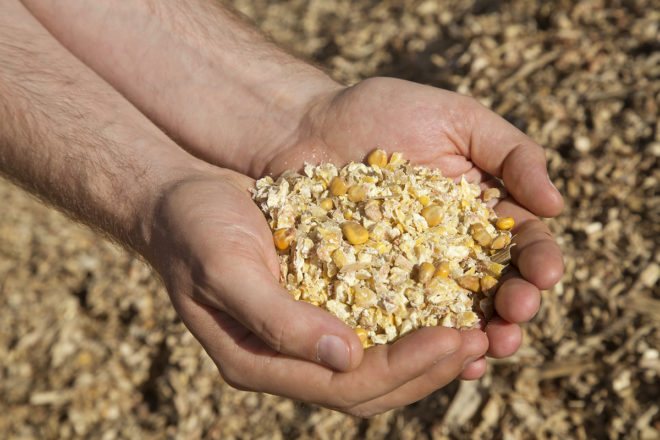

How to choose compound feed?
How to make compound feed with your own hands? You can independently make changes in the composition, you can only in the case of your own preparation. But this is possible only if the owner of the pig farm has access to the feed base, otherwise it will not make sense to make your own compound feed.
If the farmer nevertheless decided to make compound feed with his own hands, and not buy ready-made, do not forget that there is no complete universal feed, and it will be necessary to prepare his own feed for a separate group of pigs.
When making a combined feed for baby pigs, there are no special differences with the recipe for making feed for adult pigs. The ingredients are usually similar, but the proportions are different. Therefore, it is important not to violate the ratio in percentage terms.
For fattening pigs and piglets, a finely ground feed mixture is required. In addition, the density of the feed should resemble a very thick porridge. It is this type of consistency that allows all the necessary substances in the body of young pigs to be absorbed as much as possible.
To prepare compound feed, a farmer needs to have in stock:
- cereal barley - 1kg;
- feed yeast - 100g;
- fat for fattening animals - 45g;
- limestone - 15g;
- sodium chloride - 5g.
Initially, the instructions for cooking involve grinding cereals. Next, add the remaining components and mix, ensuring uniformity. Additional ingredients can be potatoes, peas and even bread.
Fattening of adult pigs is aimed at maximum weight gain and subsequent slaughter. For these purposes, coarse grain feed is suitable. In terms of density, the mixture should resemble a liquid gruel.
Slaughter feed is prepared from the following components:
- barley - 450g;
- oats - 350g;
- alfalfa flour - 165g;
- meat and bone meal - 120g;
- sunflower meal - 80g;
- limestone - 20g;
- sodium chloride - 10-12 g.
It is necessary to grind the existing cereals to a medium grain size, and not to a fine one, as in the first option. After that, everything mixes well.
In the manufacture of compound feed for bacon fattening of pigs, the composition can be adjusted with your own hands by adding to the feed, in addition to barley and oats, corn, milk return and hay flour.
It is worth noting that good feed for pigs cannot be cheap, all the components plus the manufacturing process require significant investments from the manufacturer, so the high price is understandable. Breeders who have made homemade compound feed at least once understand that this is a rather expensive task. Sometimes it's even cheaper to buy rather than make the mixture yourself.
Now about the manufacturers. Imported feed has a good reputation, as well as domestic, but when choosing foreign brands, you need to carefully deduct the composition and purpose. It is easier with domestic ones in this regard. Often, certain feeds are developed not only for a particular direction of pigs (meat, greasy), but also for a specific breed, so they may not suit everyone.
If the buyer does not know a foreign language well (a description of the product from an import manufacturer can be given in it), it is worthwhile to study his products on the Internet in advance, where a description of each line of mixed feed for pigs will be given in detail and in his native language.
Which is better
it is difficult to give an unambiguous answer to this question. If you carry out the preparation of compound feed with your own hands, then sometimes the farmer does not have doubts about the composition of the compound feed. In addition, it becomes possible to independently vary the filling of the mixture at your own discretion.
But self-preparation of compound feed makes sense only if the farmer has access to the food base. Indeed, to obtain feed, it is necessary to use grass, roots, grain. If you have to purchase grain for this, it is impossible to prove that the resulting feed will be environmentally friendly and natural. Also, the farmer will have to master various options for the preparation of compound feed, because for a certain age of the pig, it is necessary to use specific components in the composition of the feed. It is much easier to purchase finished products.
How much a pregnant pig walks will help to understand this information.
Cooking at home
Adults
For an optimal return on his animals, the pig breeder must introduce compound feed into their diet every day. But the choice is always open to him, buy it in the store or do it yourself? Which of this is more cost-effective for him? The answer is simple, you need to proceed from your capabilities both financially and in terms of obtaining the necessary ingredients for a complete mixture.
If you decide to cook a mash on your own, then remember that mixtures based on grain are considered optimal. Then for the pigs it is imperative to grind grain and other large ingredients. As already mentioned, according to the degree of grinding, compound feeds of coarse, medium and fine grinding are distinguished. Next, you need to remember that the mixture prepared with your own hands can be of different consistencies, namely:
- dry - its moisture content is not more than 14%;
- crumbly dry - the ratio of dry mixture to water is 1 / 0.5;
- wet crumbly - the ratio with water is about 1/1;
- thick mushy - 1 / 1.5;
- mushy liquid - 1/2;
- thick soup - 1 / 2.5;
- soup-like liquid - 1/3.
Depending on the age of the piglet, it is preferable to feed this or that mixture. For a greater return on self-prepared feed, it is better to additionally introduce vitamin and mineral supplements into the diet of animals, for example, premixes. It is also worth remembering that boiling or steaming the grain is not recommended, since the feed loses almost all of its beneficial properties. Below is a table for preparing a universal mash for piglets of different weight categories.
Table of the optimal composition of compound feed for pigs of different ages
Preparing a mixture for piglets is not much different from preparing a similar product for adults. The ingredients in both cases can be the same, just, depending on the age of the animal, their percentage in the total composition of the product will change. Then it is worth considering the fact that only finely ground mixtures are suitable for piglets and fattening young animals. Also, the consistency of compound feed for small pigs should be thick mushy or moist crumbly.
With this consistency, the feed is absorbed most quickly by the body. It should also be remembered that it is not recommended to give it cold, and it should be warmed up to about 30 degrees Celsius. Now let's look at one fairly simple recipe for piglet feed mix. So, for its preparation we need:
- cereals (barley, wheat, corn, oats) - 1 kg;
- feed yeast - 100 g;
- feed fat - 40 g;
- chalk - 15 g;
- salt - 5 g.
For adults
Individuals that are fattened for slaughter can be fed with coarse grain mixtures. Those that keep on brood are recommended to feed only medium grinding. If we talk about consistency, then for adults, liquid mushy mash is better suited. And now here's a recipe for a mash, which is easy to make at home. So, the composition:
- barley - 400 g;
- oats - 300 g;
- alfalfa flour - 160 g;
- meat and bone meal - 120 g;
- sunflower cake - 80g;
- chalk - 20 g;
- salt - 10 g.
The mixture is prepared in the same way as the feed for piglets, but here the grain is crushed not to a fine consistency, but to a medium one. Then the rest of the ingredients are added to it and everything is thoroughly mixed. Additionally, you can mix the premix. Its consumption per 1 kg of product is about 80-100 g. You can feed pigs with such a mixture all year round, and you can also prepare granulated feed from such mixtures.
Criteria for choosing a commercially available combination feed
To improve the quality of the final product (meat and lard), it is necessary to worry in advance about the correct choice of compound feed, while it is necessary to take into account the target breeding of animals and select protein, carbohydrate or roughage.


The basis of each feed should be cereals, which provide the energy base for animal growth, in order to obtain meat with a low fat content, mixtures with protein supplements are selected, and to increase the fat content, fresh roots and green components are introduced into the pigs ration.
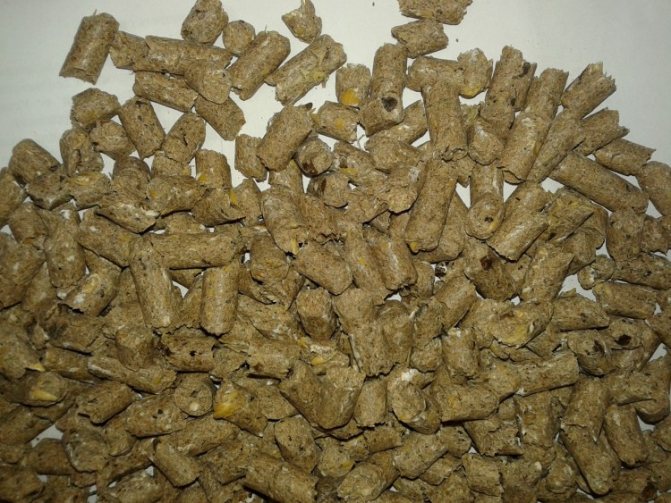

Dacha norms
Pigs are fed dosed feed, as they do not control the regimen. The composition, quality and quantity of food is influenced by:
- pig breed;
- age;
- appointment.
Key norms:
- On average, pigs are fed 2-4 kg of compound feed per day per animal.
- Suckling pigs are fed 550 g per day, they eat mother's milk.
- Piglets up to 3 months - up to 1.5 kg per day.
- At 6 months - 2 kg;
- From 8 months - up to 3.2 kg;
- The norm of lactating pigs is 6 kg of feed.
- When fattening for bacon - 3.5 kg.
- When fattening for fat - 3.1 kg.
To feed a piglet or an adult pig, choose a recipe that suits the purpose of the feeding and calculate the dosage according to the breed charts. Purchase or prepare meals, remembering to add sources of vitamins. By getting their feed that is ideal in all respects, a piglet, a boar-producer or an adult pig will receive a sufficient amount of nutrients and will not experience a lack of food.
On average, the daily consumption rates for pigs of combined feed are:
- piglets up to 2 months of age - 1000 g;
- 3-month-old piglets - 1500 g;
- half-year-old animals - 2000 g;
- 8-month-old fattening animals for meat conditions - 3400 g;
- 8-month-old animals for fattening for fat - 3000 g;
- females before the first mating - 2300 g;
- pregnant females - 3700 g;
- females during lactation - up to 6400 g.
How much feed to feed the animal per day, month or year? For greater clarity of their consumption, a table will be given of different types of mash, which you need to feed 1 pig throughout its life. There will also be a comparison of giving feed from different manufacturers. For this, we selected 2 domestic manufacturers and took their assortment of goods.
Assortment table and
Daily rate
Determining the daily ration of compound feed is quite easy. On average, for an adult, it ranges from 2 to 4 kg per head. For a nursing sow, this figure can go up to 6 kg. For suckling weaners, the norm is from several tens of grams to a couple of hundred grams. And for piglets in a month and a half, the norm is about the same and is about one and a half kilograms per head. For greater clarity, below are tables of norms for giving different types.
Table of the daily feed consumption rate from the manufacturer LLC Soyuzpishcheprom Association
Manufacturer's daily feed rate table
You can also easily calculate the daily rate and the rate of feed per year, if you know its nutritional value. So, below is a table of the needs of growing pigs in protein and energy, and also the approximate daily allowance for one head is immediately calculated.
Table of the needs of growing pigs, as well as the approximate feed consumption
This suggests the conclusion that consumption per day per pig depends on age, sex, weight, type of feed, etc. Therefore, for a more accurate calculation, all these factors must be taken into account.
Rate per year
It is quite difficult to accurately calculate the feed rate for 1 year. If you make a rough estimate, then you can use the table of the needs of growing individuals for energy and protein. So, based on it, from 21 to 40 days of a pig's life, she will need 10.45 kg of compound feed. In the period from 40 to 60 days - 23.6 kg, from 61 to 90 days - 53.65 kg, from 91 to 120 days - 69.6 kg, from 121 to 150 days - 82.94 kg and from 151 to 180 day - 93.67 kg.

